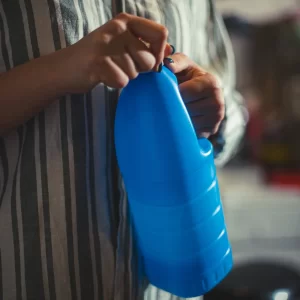Our use of antimicrobial cleaners spiked during the pandemic. Given the potential long-term health risks, it might be worth cutting back again.
The cleaning industry experienced a boom during the first years of the pandemic. Covid-19 cleaning protocols in schools, stores and other public spaces ratcheted up, with a spray and a wipe-down becoming de rigueur on every surface after every use. Fear of the coronavirus also prompted people to use more disinfectant wipes and sprays in their homes, and consumer spending on cleaning products increased 12 percent between 2019 and 2021. (The New York Times admittedly contributed to this disinfecting frenzy.)
We now know that the extra cleaning was unlikely to have helped limit the spread of Covid-19, but it did increase people’s exposure to the chemicals used in those products — some of which may be hazardous to health. Experts worry that repeated inhalation or skin contact can be harmful over time. Calls to poison control centers about cleaning chemicals also increased during the pandemic, primarily for accidental or intentional ingestion.
In some instances — like the start of a new and mysterious pandemic — the immediate risk of infection is pre-eminent and outweighs any future potential consequences from chemical exposure. But since we now know that disinfecting isn’t likely to protect us from Covid, it’s worth taking stock of whether the risks of using certain cleaning products are greater than the rewards. Crucially, the experts we spoke to for this story said that simple soap and water is sufficient for regular cleaning.
Here’s what to know about the safety risks of the most common antimicrobial chemicals and how to reduce your exposure while keeping your home hygienic.
Which of my cleaning products are disinfectants?
Disinfectants are commonly found in all-purpose surface cleaners marketed for use in kitchens or bathrooms. Think 409, Lysol sprays, Clorox wipes or anything else that says “kills 99.9 percent of germs” on the label.
The most prevalent disinfecting chemicals are quaternary ammonium compounds, also known as “quats” or Q.A.C.s. Their chemical names typically end in a variation of “ammonium chloride,” such as alkyl dimethyl benzyl ammonium chloride or the snappier benzalkonium chloride.
The other main types of disinfecting chemicals are chlorine-based products, namely bleach (sometimes labeled sodium hypochlorite); different types of acids, like citric acid, hydrochloric acid or lactic acid; and hydrogen peroxide.
Knowing what’s in a cleaning product can be tricky because the federal government does not currently require companies to list chemicals on labels. In 2017, California passed legislationdemanding clearer product listings, and the American Cleaning Institute, which represents the U.S. cleaning products industry, told The Times it was lobbying for legislation to regulate labeling nationally. In the meantime, you may have to look up ingredient lists online using brand websites or resources like SmartLabel or the Environmental Working Group’s product guide.
What are the concerns with these chemicals?
The health risks cleaning chemicals pose are hard to pin down because exposure is difficult to quantify, and many of the commonly attributed conditions — like asthma, cancer and infertility — take years to develop. Some of the research that exists has been done in professional fields to determine whether certain health problems are more prevalent in people who have higher exposure levels, like janitors and nurses. Other studies conducted on mice aim to more directly test whether certain chemicals cause negative health outcomes, but findings in animals don’t always apply to humans.
